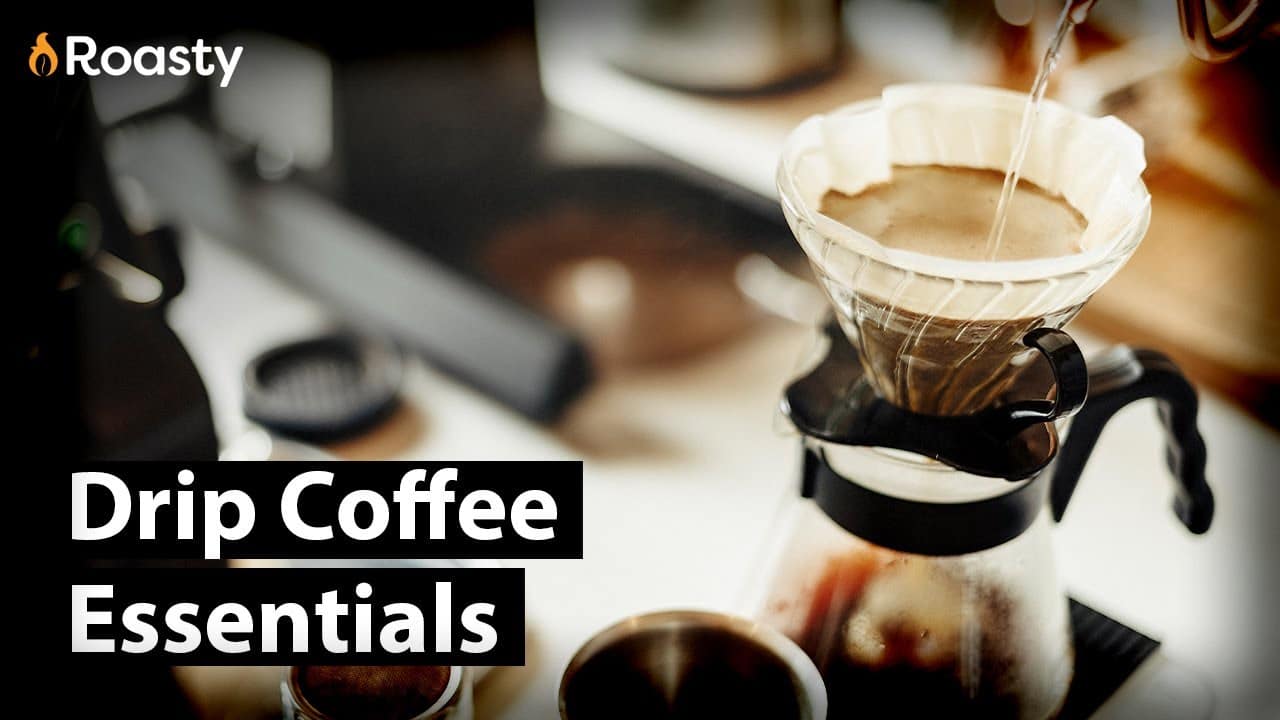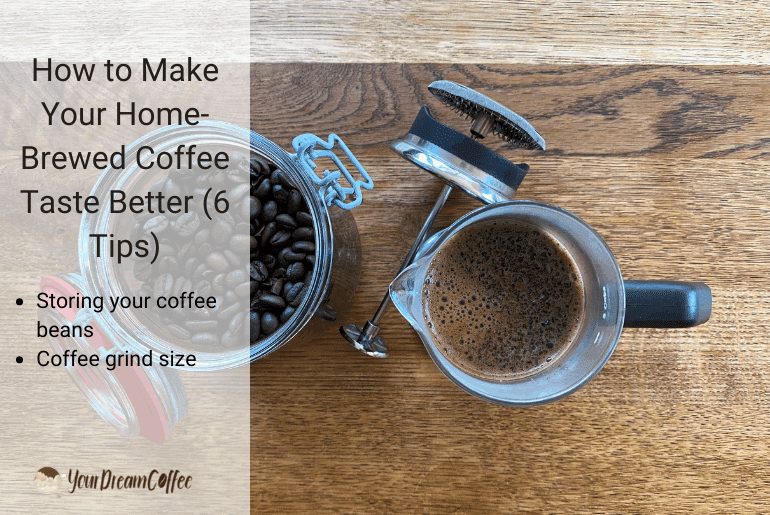Whether you’re a coffee connoisseur or just a casual caffeine enthusiast, one thing is sure: the taste of your homemade coffee matters. But we’ve all experienced those disappointing mornings when our brew falls flat.
Don’t despair! In this article, you’ll discover some simple and practical tips that will elevate the flavor of your homemade coffee to new heights.
From choosing the right beans to trying out different brewing methods, we’ve got you covered. Prepare to savor every sip and impress your taste buds like never before.
1. Choosing the Right Coffee Beans
1.1. Considering the Coffee Roast
When choosing the right coffee beans, one of the first things to consider is the roast level. The roast level determines the flavor profile of the coffee, ranging from light to dark.
Light roast beans tend to have a brighter and more acidic flavor, while dark roast beans have a bolder and more robust taste. It ultimately comes down to personal preference, so experiment with different roast levels to find the one that suits your taste buds best.
1.2. Opting for Freshly Roasted Beans
To truly enhance your homemade coffee’s taste, opting for freshly roasted beans is crucial. Coffee beans are at their peak flavor within two to four weeks of being roasted. Beyond that, they may lose their freshness and develop a stale taste.
Look for coffee beans with a roast date printed on the packaging and try to purchase them within a few weeks of that date. This will ensure you get your brew’s most flavorful and aromatic beans.
1.3. Exploring Different Coffee Bean Varieties
Another aspect to consider is the variety of coffee beans you choose. There are numerous varieties available, each with its unique flavor characteristics. Some popular options include Arabica, known for its smooth and nuanced flavors, and Robusta, which tends to have a stronger and more bitter taste.
Additionally, you can explore single-origin beans from specific regions, allowing you to experience the distinct flavors of different coffee-growing areas. Don’t be afraid to experiment and try new varieties to discover your favorites.
2. Grinding the Coffee Beans
2.1. Investing in a Coffee Grinder
Grinding your coffee beans before brewing is crucial for achieving the best possible flavor. Investing in a coffee grinder is highly recommended, as it allows you to grind the beans to your desired consistency.
A burr grinder is often considered the best option, as it grinds the beans more evenly and prevents overheating, which can negatively impact the flavor. Control over the grind size will help you extract the flavors properly during brewing.
2.2. Selecting the Right Grind Size
The grind size of your coffee beans plays a significant role in the flavor extraction. Different brewing methods require different grind sizes to optimize the flavor. For example, a fine grind works well for espresso machines, while a medium-coarse grind is more suitable for pour-over or French press brewing.
It’s important to match the grind size to your chosen brewing method to achieve the best balance of flavors. Refer to the instructions or guides specific to your coffee grinder to determine the appropriate grind size for your brewing method.
2.3. Grinding the Beans Just Before Brewing
To ensure the freshest and most flavorful cup of coffee, it’s essential to grind your beans just before brewing. Coffee beans contain volatile compounds that can rapidly degrade when exposed to air.
You can capture the maximum flavor and aroma by grinding the beans immediately before brewing. Avoid grinding your beans too far in advance, resulting in a lackluster and stale-tasting brew. Embrace the ritual of grinding your beans right before you’re ready to enjoy a delicious cup of coffee.
3. Water Quality and Temperature
3.1. Using Filtered Water
The quality of water used in brewing coffee can greatly affect the taste. Using filtered water is recommended to remove any impurities or unwanted flavors that tap water may contain. Water with a high mineral content or chlorine can negatively impact the flavor profile of your coffee. Filtered water helps ensure a clean and pure canvas for extracting the delicate flavors of your chosen coffee beans.
3.2. Achieving the Ideal Water Temperature
Water temperature is another critical factor in brewing the perfect coffee. The ideal temperature for brewing coffee lies between 195°F and 205°F (90°C to 96°C). Water that is too hot can result in over-extraction, leading to a bitter taste, while water that is too cool may not extract the full range of flavors. Utilizing a thermometer or an electric kettle with temperature control can help you achieve the optimal water temperature for brewing your coffee.
4. Experimenting with Brewing Methods
4.1. Pour-Over Brewing
Pour-over brewing is a popular and simple method that allows you to have full control over the extraction process. To brew using this method, you’ll need a pour-over cone, a paper filter, freshly ground coffee, and hot water.
Start by placing the cone on top of your coffee cup or carafe, then insert a paper filter and add the desired amount of ground coffee. Slowly pour hot water in a circular motion, allowing the water to saturate all the coffee grounds evenly. This method produces a clean and flavorful cup of coffee, highlighting the nuances of your chosen beans.
4.2. French Press Brewing
The French press brewing method is another favorite among coffee enthusiasts. It provides a full-bodied and rich cup of coffee. To brew using a French press, add coarsely ground coffee to the bottom of the press.
Then, pour hot water (about 200°F) over the coffee, ensuring all the grounds are fully immersed. Let it steep for about four minutes, then press down the plunger slowly to separate the coffee grounds from the liquid. The result is a robust and full-flavored coffee that captures the essence of your chosen beans.
4.3. Aeropress Brewing
The Aeropress brewing method is a versatile and compact option for brewing coffee. You’ll need an Aeropress device, a paper filter, coffee, and hot water to use an Aeropress. Start by inserting a paper filter into the device and placing it over your coffee cup or carafe.
Add the desired amount of ground coffee to the Aeropress, then slowly pour hot water over the coffee and stir gently. Press the plunger down after a short steeping time to extract the coffee into your cup. The Aeropress delivers a smooth and clean cup of coffee with a wide range of flavor possibilities.
4.4. Cold Brew Method
If you prefer a less acidic and smoother cup of coffee, the cold brew method is worth exploring. Cold brew involves steeping coffee grounds in cold or room temperature water for an extended period, typically 12 to 24 hours.
This slow extraction process results in a coffee concentrate that can be diluted with water or served over ice. The cold brew method highlights the coffee beans’ natural sweetness and subtle flavors while minimizing acidity. Experiment with different brew times and ratios to find the cold brew that suits your taste.
5. Proper Coffee-to-Water Ratio
5.1. Understanding the Golden Ratio
The coffee-to-water ratio is crucial in achieving a well-balanced and flavorful cup of coffee. The golden ratio commonly used is 1:16, which means one part coffee to 16 parts water.
This ratio can be adjusted according to personal preference, but it is a good starting point. For example, if you’re brewing 16 ounces of water, you’ll need around 1 ounce (or 28 grams) of coffee. Experiment with different ratios to find the strength and flavor intensity you enjoy most.
5.2. Adjusting the Ratio to Personal Preference
The golden ratio is a helpful guideline, but feel free to adjust it to your taste. If you prefer a stronger cup of coffee, you can increase the amount of coffee or decrease the amount of water.
Conversely, if you prefer a milder cup, you can reduce the coffee or increase the water. It’s all about finding the perfect balance that satisfies your taste buds. Don’t be afraid to experiment and customize the ratio to suit your preferences.
6. Timing and Steeping
6.1. Controlling Brew Time
The brewing time plays a significant role in flavor extraction. Each brewing method has its ideal brewing time. Aim for a total brew time of around three to four minutes for pour-over brewing. French press brewing typically requires a steeping time of four to five minutes. With Aeropress, the steeping time can range from one to two minutes.
On the other hand, cold brew requires a much longer steeping time of 12 to 24 hours. Following the recommended times for each brewing method is essential to achieve the best results and avoid over-extraction or under-extraction.
6.2. Maximizing Flavor Extraction
To maximize the flavor extraction during the brewing process, make sure to agitate or stir the coffee grounds gently. This helps ensure that all the grounds are evenly saturated with water, allowing for consistent flavor extraction.
When using pour-over or Aeropress methods, stir the coffee and water mixture gently once or twice during brewing. For French press brewing, gently stir the coffee grounds after adding the water. These simple actions can significantly impact the overall flavor and ensure a more balanced and flavorful cup of coffee.
7. Adding Flavor with Spices or Ingredients
7.1. Incorporating Cinnamon or Nutmeg
If you want to enhance your homemade coffee’s flavor, consider adding spices like cinnamon or nutmeg. These warm and aromatic spices can complement the natural flavors of coffee and add a delightful twist to your brew.
Simply sprinkle a pinch of either cinnamon or nutmeg onto your ground coffee before brewing. Alternatively, you can sprinkle some on top of your finished coffee for an extra flavor and aroma. Experiment with different amounts to find the right balance that suits your taste preference.
7.2. Experimenting with Vanilla or Cocoa Powder
For those who enjoy a hint of sweetness and indulgence in their coffee, consider experimenting with vanilla or cocoa powder.
Adding a drop or two of vanilla extract to your brewed coffee can impart a subtle and pleasant aroma. If you’re a fan of chocolate, try dusting a small amount of cocoa powder onto your freshly brewed coffee for a rich and decadent experience. These additions can elevate the flavor profile of your coffee and make each sip a delightful treat.
7.3. Trying Different Types of Milk or Creamers
If you prefer a creamier and smoother cup of coffee, trying different types of milk or creamers can be a game-changer.
Options like whole, half-and-half, almond, or oat milk can add a velvety texture and creamy taste to your coffee. Experiment with different milk alternatives and find the one that complements your chosen coffee beans. Additionally, flavored creamers or syrups can also be used to add a touch of sweetness or unique flavors. Be sure to taste and adjust the amount to suit your preference.
8. Proper Storage of Coffee Beans
8.1. Using Airtight Containers
Proper storage of coffee beans is crucial to maintain their freshness and flavor. It’s recommended to store your coffee beans in airtight containers to protect them from exposure to air, moisture, and odors.
A glass or ceramic container with a tight-fitting lid is an excellent choice. Avoid using transparent containers, as they allow light to degrade the quality of the coffee beans. Keep the container in a cool and dry place, away from direct sunlight, heat, and humidity, which can accelerate the degradation process.
8.2. Avoiding Direct Sunlight or Heat Exposure
Coffee beans are sensitive to light and heat, so keeping them away from direct sunlight or heat exposure is essential. Extended exposure to light and heat can cause the beans to lose their freshness and develop a stale taste.
Find a cool and dark storage spot, such as a pantry or cabinet, to protect the beans from these harmful elements. By storing your coffee beans properly, you’ll ensure that they retain their flavors and freshness for longer, resulting in a more satisfying cup of coffee.
9. Cleaning and Maintaining Coffee Brewing Equipment
9.1. Regularly Cleaning Coffee Maker
To maintain the taste and quality of your homemade coffee, it’s crucial to clean your coffee maker regularly. Over time, coffee residue and oils can build up, affecting the flavor of your brew. Follow the manufacturer’s instructions for cleaning your specific coffee maker model.
Generally, cleaning involves thoroughly rinsing removable parts, such as the carafe and filter basket, with warm, soapy water. Additionally, wipe down the exterior of the coffee maker to remove any grime or fingerprints. Regular cleaning will ensure that your coffee maker operates optimally and delivers consistently delicious coffee.
9.2. Descaling and Removing Coffee Oils
Descaling your coffee maker is an essential maintenance step to keep it in optimal condition. Over time, mineral deposits can accumulate in the internal components of the machine, affecting the taste and performance.
Follow the manufacturer’s instructions to descale your coffee maker using a descaling solution or a mixture of water and vinegar. This process will help remove mineral buildup and coffee oils that can hinder the flavor and functionality of the machine. Regular descaling will prolong the lifespan of your coffee maker and ensure that every cup of coffee tastes its best.
9.3. Replacing Old Filters or Parts
It’s important to regularly check and replace any old or worn-out filters or parts of your coffee brewing equipment. Filters can become clogged or develop a buildup of residual oils, affecting the taste and quality of your coffee.
Replace the filters as the manufacturer recommends or when you notice signs of wear and tear. Additionally, over time, parts like the plunger in a French press or the seals in an Aeropress may need to be replaced for optimal performance. Keeping your brewing equipment in good condition will ensure you consistently achieve the best possible flavor in your coffee.
10. Trying Specialty Coffee Additions
10.1. Exploring Flavored Syrups
Consider adding flavored syrups to your coffee for a burst of unique flavors and a touch of sweetness. Flavored syrups, such as vanilla, caramel, hazelnut, or peppermint, can add a delightful twist to your usual cup of coffee.
Experiment with different flavors and adjust the amount to your liking. These syrups are widely available at grocery stores or specialty coffee shops and can elevate your homemade coffee to a cafe-worthy treat.
10.2. Adding Whipped Cream or Chocolate Shavings
If you want to indulge in a decadent coffee experience, consider adding whipped cream or chocolate shavings to your cup of coffee.
The creamy texture of the whipped cream combined with the rich flavor of the coffee creates a luxurious treat. Similarly, topping your coffee with a sprinkle of chocolate shavings can add sweetness and a visually appealing presentation. These additions are perfect for special occasions or when you want to turn your everyday cup of coffee into a delightful indulgence.
In conclusion, improving the taste of your homemade coffee is a journey of exploration and experimentation. By choosing the right coffee beans, grinding them fresh, and utilizing the appropriate brewing methods, you can unlock a world of flavors and elevate your coffee experience.
Pay attention to water quality, ratio, and temperature to ensure optimal extraction. Don’t be afraid to add your personal touch with spices, flavored syrups, or creative toppings.
Proper storage, regular cleaning of equipment, and trying specialty coffee additions will further enhance the quality and taste of your homemade coffee. Enjoy the process and savor each sip as you discover the perfect cup of coffee that suits your unique preferences.










































